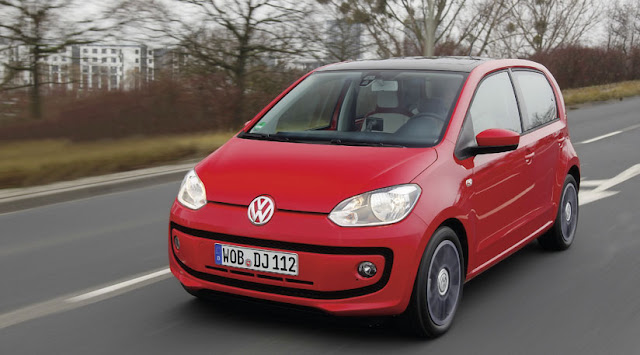The Audi Q3
has only been around for a year, but the company continues to spin off
variants at an alarming rate as it scatters new product into every which
niche in the market. So here we have the latest Q3 model on test: a
front-wheel drive, lower-powered 2.0-litre turbodiesel mustering 138bhp
and with a simple stick shift (the pics are of the auto we tested in the
February 2012 issue of CAR Magazine).
There are some at CAR who'll struggle to see where the Q3 fits in to
Audi's plan for global premium domination. It's a rather amorphous
shape, a mini-me Q5 - itself a shrunken Q7. This brings drawbacks (many
won't quite know what it is without peering at the badge and we came to
realise it's had a total character bypass) but at the same time means
you know what you're going to get.
Yes, all the usual Audi build quality rules apply. Some CAR readers
think we're slaves to VW group production processes, but I bet you
couldn't sit in the plump seats of a new 2012 Audi Q3 and profess it's
not superbly finished. It has that solidity, that sober, oh-so-sensible
heft to every surface inside and out which reeks of quality.
So who's going to buy an Audi Q3?
Good question. Despite its compact footprint - at 4385mm long, it's
the same size as a Peugeot 3008 or Range Rover Evoque - you can seat
four grown-ups comfortably and the rear is bigger than I was expecting.
Just watch out for the double-length panoramic sunroof which gobbles
rear headroom.
The 460-litre boot, too, is larger than I had assumed. It's a high-up
trunk and comes neatly trimmed in a square shape with no transmission
tunnel intrusion. Lift the false floor and there's more room below in
between the spare wheel, battery and Bose sound system extras.
So the Q3 is a viable small family car. If you've got young children -
or an empty nest - you'll find this shrunken soft-roader just fine.
It's pricey though: Q3 prices in the UK start at £25,690 and climb to a
peaky £31,360. Our lower-rung Q3 2.0 TDI with 138bhp cost £24,560, but
came with options sending it to £33,090:
• Monsoon Grey metallic paint £525
• Black/Fine Nappa leather £1250
• 18in x 7J ‘5-twin-spoke’ design alloy wheels £495
• Luggage compartment package £85
• DAB digital radio £305
• Full paint finish £100
• Comfort package £605
• Technology package £1495
• Xenon light package £1150
• Audi drive select £220
• Panoramic glass sunroof £1100
• Heated front seats £260
• Audi parking system plus with park assist £250
• Bose surround sound £690
• Black/Fine Nappa leather £1250
• 18in x 7J ‘5-twin-spoke’ design alloy wheels £495
• Luggage compartment package £85
• DAB digital radio £305
• Full paint finish £100
• Comfort package £605
• Technology package £1495
• Xenon light package £1150
• Audi drive select £220
• Panoramic glass sunroof £1100
• Heated front seats £260
• Audi parking system plus with park assist £250
• Bose surround sound £690
Wow, so that's a lot of options. What's a loaded Q3 2.0 TDI like to drive?
Entirely as you'd expect. Every control surface has that usual Audi
feel: while Volkswagen's platform strategy manifests itself with
pleasingly different designs on the outside, the driving experiences
within often blur into one Germanic precision continuum. This new Q3 is
no different. You could be blindfolded and struggle to tell it apart
from a VW Tiguan.
The front-wheel drive Q3 is as inert as you'd expect and is some way
off the responsiveness of, say, a BMW X1 or Range Rover Evoque. But it's
very refined and quiet and has all the wholesome qualities of organic
premium food you'll find in the expensive aisle of Waitrose. It's very
much aimed at those sorts of buyers for whom outright value matters less
than the badge and the quality message consistent with their lifestyle.
Losing traction at the rear axle shouldn't shed a single sale and
despite the odd chirrup out of damp junctions the Q3's front-wheel drive
chassis never feels overwhelmed by the 138bhp and 236lb ft the
turbodiesel musters. Performance is quite perky, feeling quicker than
Audi's 0-62mph in 9.9sec claim.
Fiddle around with the Drive Select option fitted to our test car and
you can flick between Auto, Dynamic, Comfort and Economy settings for
the various switchable electronics which govern damping quality,
steering weight and throttle responsiveness. Dynamic is tellingly firm;
not good when I found the ride on 18in rims unsettlingly jiggly anyway.
We left it in Comfort for most of our test to remove the worst spikes
from the ride.
Verdict
The Audi Q3 is a polished act in the showroom. You can criticise
Audi's blunderbuss product strategy all you like but you can't argue
with the customer proposition of offering heaps of choice. Audi UK sold
530 Q3s last year and who are we to argue with that commercial
transaction? People want soft-roaders and they want them in downsized
packages. Throw in the vogueish Audi badge and this car promises plenty.
Yet to an enthusiast, the Audi Q3 seems to lack the sparkle that
draws us to the best products in class. We parked the Q3 next to our
long-term test Range Rover Evoque and realised immediately what the Audi
is missing: a little bit of soul.
Mind you, for the majority of buyers, a hyper-polished, restrained
slug of quality wearing an Audi Q3 badge will be quite enough. And if
that's their expectation, they won't be disappointed.
































